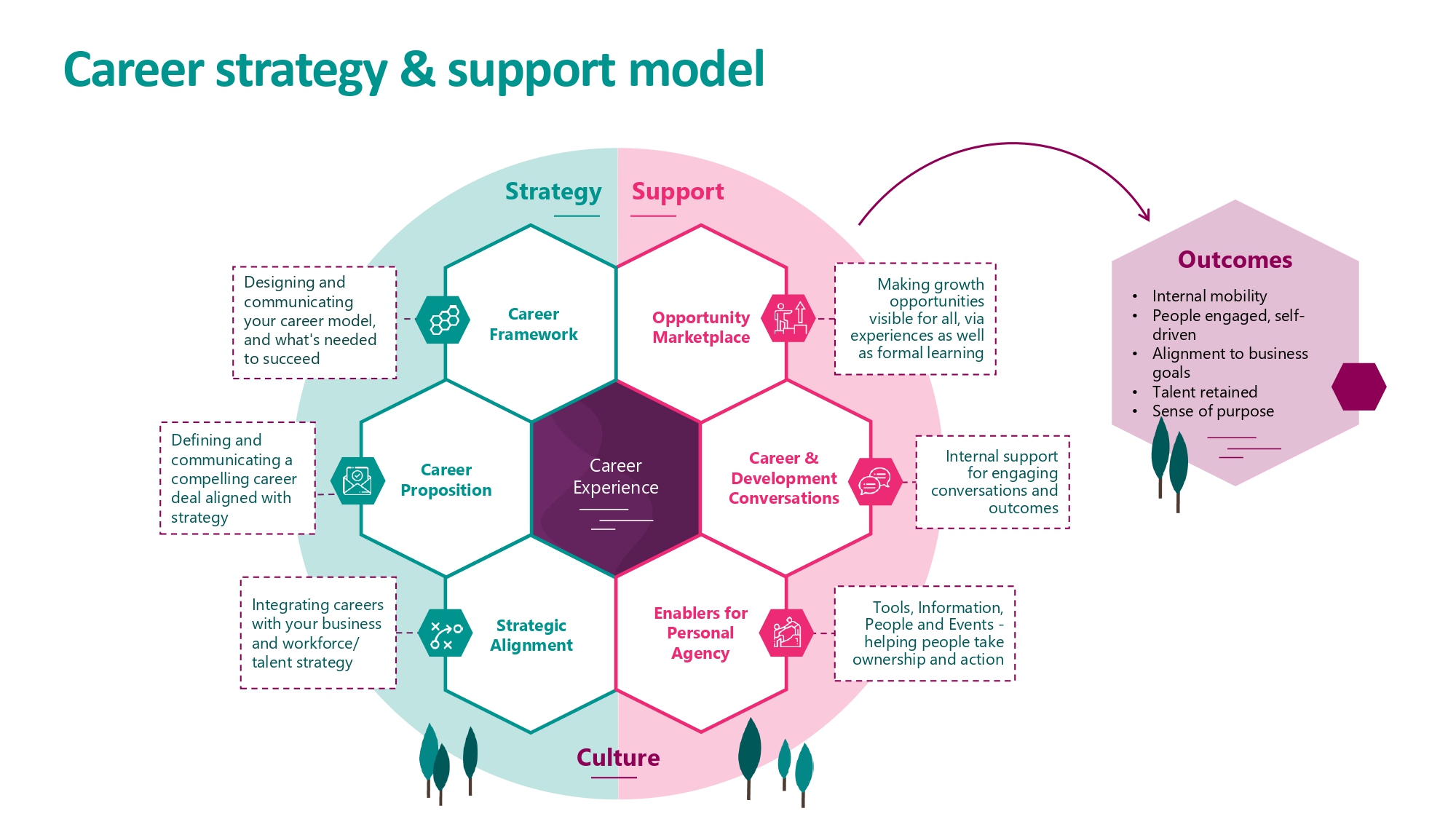Careers have always mattered to individuals, but while organisations have long recognised their importance, career strategy has never been an urgent business priority. I’ll explore why this perception is changing and how high-performing organisations are responding.
Careers are in the news
In 2020, reflecting on the reluctance of many organisations to commit to a sustained investment in career development, Dr Wendy Hirsh commented “For most organisations and HR functions, career development is the malnourished corner of talent management.” [1]
Fast forward two years, and Josh Bersin recently claimed that because high performing organisations ‘grow through development, mobility, retention, and strategic job design’ [2], expertise and a track record in careers is now one of the four most important HR skills.
Why is career development so important now?
In large part, career development has moved up the HR priority list because tight labour markets mean companies can no longer rely on external recruitment to meet their current, and future, capability needs.
What else explains this shift from Cinderella HR discipline to hot topic? I believe there are three factors:
- Employee focus – through its focus on the employee experience, career development gives voice to the customers of HR policies and tools. This has the advantage of counter-balancing the traditional top-down emphasis of talent management. It also reflects the status of the career offer as a central feature of every organisation’s EVP.
- Reach – Career initiatives have reach, as career development is relevant to all stages of the employee lifecycle. It is a great catalyst for aligning different elements of business and HR strategy.
- Build not buy – If the organisation commits to ‘build not buy’ as its preferred resourcing approach in a tough recruiting environment and context of constant transformation, then it’s made a strategic decision. A decision with implications for organisational process and structure, individual behaviour and technology.
We reflect each of these dynamics in our Career Strategy and Support model; the reference point for all client career strategy projects and change plans.
What are the benefits of career strategy work in practice?
Vignette 1
The need: An international business in the consumer products sector prioritised supporting employee retention after a major acquisition.
Understandably, employees from the acquired business were eager to know how their new career deal would match up. We supported the client to articulate and embed a new career proposition and put in place a multi- language suite of career support resources. We co-created career pathing tools that helped people prepare for, and access, the growth opportunities now available in the larger organisation.
Vignette 2
The need: To re-energise the career offer to enhance talent attraction, future agility and internal talent mobility.
In response to employee feedback, a company in the life sciences industry wanted to improve visibility and access to career opportunities across an agile, and fast-growing organisation.
We helped them to develop a long-term, integrated career strategy built on the principles of employee ownership, line leader support and organisational enablement. Key features included experience maps to aid career planning within and across job families, customised development resources reflecting business challenges, and online coaching to build employee agency via a customised Be Bold in your Career experience.
Vignette 3
The need: to craft a career strategy that develops capability and potential in all parts of the organisation, while tackling pressure points in specific areas.
This assignment with an American pharmaceutical company aimed to achieve several goals:
1. To speed the development of mission-critical skills and create a larger pool of internal talent.
2. To extend the reach of career planning and development support to include hard-to-retain operational personnel
In the discovery phase of the project, we identified a number of barriers to progress, involving organisation structure, work-scheduling and leadership mind set. Tackling these procedural and cultural obstacles is now a central focus of the implementation plan.
Vignette 4
The need: to equip individuals to own their careers, and seek developmental experiences to grow and adapt with the organisation’s evolution.
In the course of our work with this engineering sector client we uncovered a misalignment with reward policy. This is important, because if the organisation says it values agility, breadth of experience and the increased skills that can come from lateral career movement, it also needs to fairly reward individuals who put themselves forward.
Without a strong integration of careers and reward, efforts to prepare employees for the future world of work can breed cynicism – instead of delivering a motivated, adaptable workforce and fulfilling careers.
Vignette 5
The need: to leverage a renewed emphasis on career development in order to raise awareness of all the opportunities on offer, break down structural silos, and encourage employees to be bold in pursuing their career aspirations.
This multi-faceted project with a major broadcaster addressed a number of strategic goals, and aligned the contributions of learning, employee experience, career development, and diversity and inclusion specialists.
This initiative also demonstrated the transformative power of storytelling. Based on the principle ‘you can’t be what you can’t see’, and featuring real-life experiences; compelling career stories have supported representation, talent mobility and recruitment efforts.
Vignette 6
The need: to adopt a ‘consumer-based’ approach to career development, by providing support that is engaging, relevant and practically useful.
We collaborated with a leading US-based software company to research and create a series of career personas to reflect different segments of their employee population.
The client’s aim is that people recognise their own situation and motivations in the personas, which guide them to focused career support from their line leader, a team of certified internal career coaches, self-directed development resources, and colleagues on a similar career journey.
The personas were launched at a month-long career event, designed to create excitement about career development and be a stimulus to individual proactivity.
What drives the success of career strategy projects?
Based on my experience leading career strategy projects, I have 5 tips to help you succeed:
- Articulate a business case demonstrating how a focus on career development and mobility tackles real business needs.
- Understand that investing in a future-focused career strategy is a long-term commitment, not a quick fix.
- Recognise the value of alignment with other HR disciplines, and the importance of resolving disconnects.
- Engage senior leadership in advocacy, as well as sponsorship.
- Appoint someone to lead the project who has organisational credibility and a deep understanding and experience of the business’s operations.
This final recommendation is perhaps the most significant. As the CRF’s 2020 Talent report commented…
‘Can an organisation truly say it takes careers and reskilling seriously if there is no one at senior level in HR who has responsibility for career development as the major part of their role? It would be akin to saying that pay and incentives are important, but we don’t have a senior person who’s accountable for Reward’.[3]
What’s the next step to help your organisation get its career strategy right?
References
[1] Wendy Hirsh, CRF Report ‘Careers, Development and Succession in a Changing Landscape’, November 2020.
[2] Josh Bersin, New Research Shows That High Growth Large Companies Have Distinct HR Skills, July 2022.
[3] Gillian Pillans, CRF Report ‘Careers, Development and Succession in a Changing Landscape’, November 2020.





